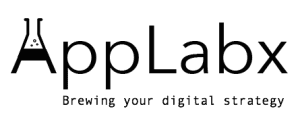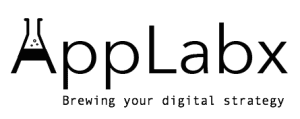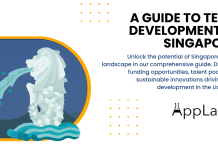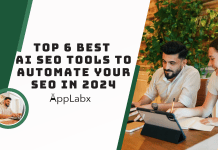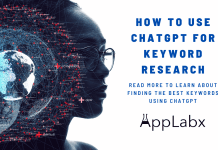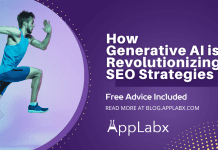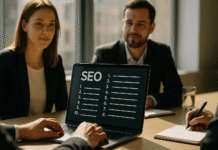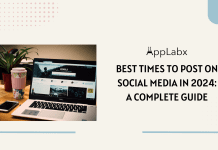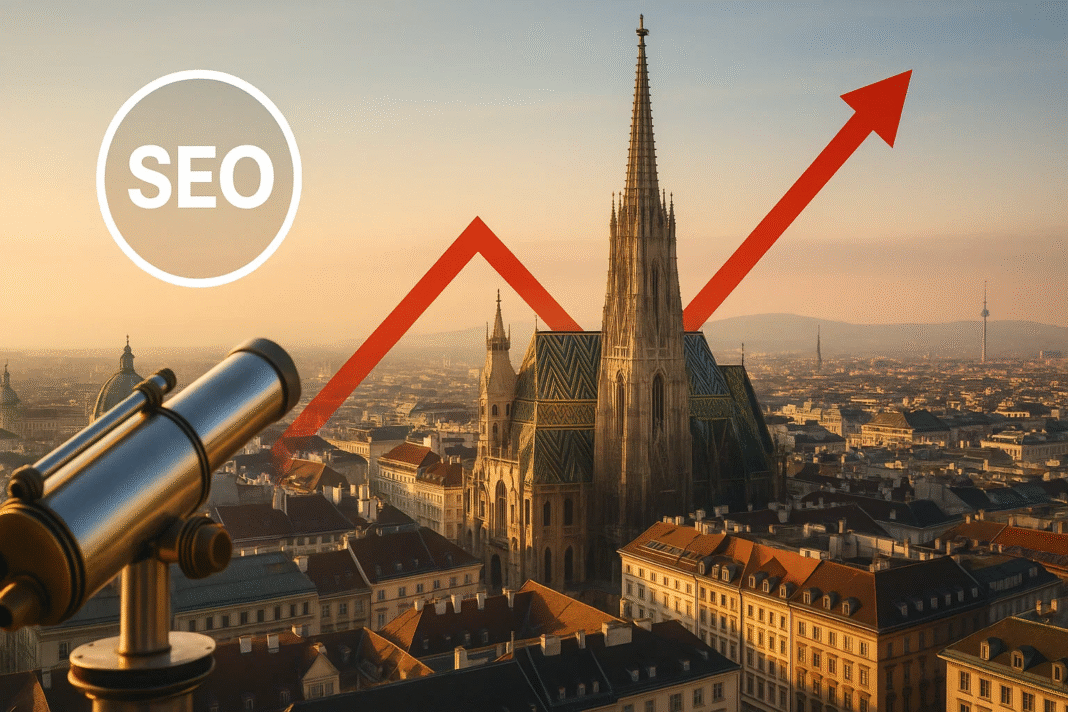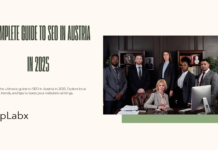Key Takeaways
- AI-driven search and Generative Engine Optimization are redefining how Austrian businesses achieve visibility in 2025.
- E-E-A-T, technical SEO, and mobile performance remain critical for sustaining rankings and user trust.
- Navigating GDPR compliance and balancing in-house vs. agency SEO investments is essential for long-term growth.
Search Engine Optimization (SEO) in Austria has entered a transformative phase in 2025, shaped by the rapid evolution of artificial intelligence, changes in consumer search behavior, and the increasing influence of European data protection regulations. For businesses, marketers, and SEO professionals, understanding the current landscape is essential for maintaining a competitive edge in Austria’s growing digital economy. With Google’s AI Overviews rolling out across Europe, the rise of zero-click searches, and the dominance of mobile-first indexing, SEO in Austria is no longer just about keywords and backlinks—it is about delivering precise, context-rich, and compliant digital experiences.
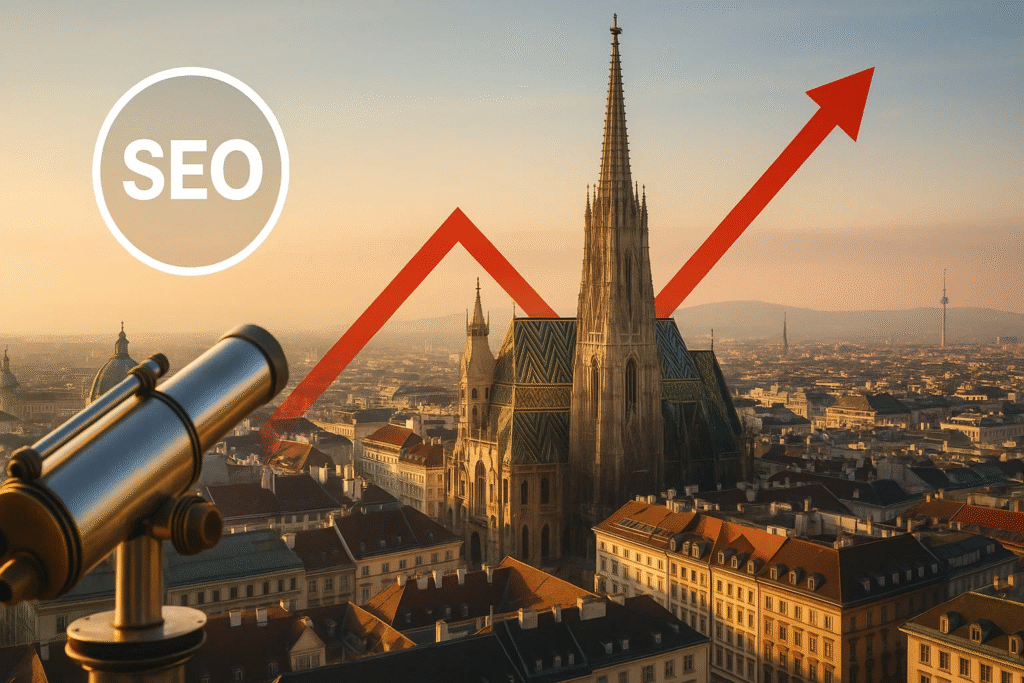
Austria’s digital market has been expanding steadily, with more than 90% internet penetration and a highly active e-commerce sector driving demand for optimized online visibility. According to DataReportal and StatCounter insights, Google remains the dominant search engine in the country, holding well over 90% of the market share, but shifts in SERP formats are forcing marketers to rethink traditional SEO strategies. The emergence of Generative Engine Optimization (GEO) is enabling forward-thinking businesses to tailor their content specifically for AI-driven results, ensuring higher visibility in an era where conversational search and rich snippets are becoming the norm.
Regulatory frameworks, especially the strict application of the General Data Protection Regulation (GDPR) and landmark Austrian Data Protection Authority rulings on Google Analytics usage, have made privacy compliance a critical component of any SEO strategy in Austria. Businesses can no longer rely solely on standard analytics platforms without ensuring lawful data processing and transparent consent practices. This has led to a surge in interest for privacy-first analytics tools like Piwik PRO, which align with EU requirements while still providing actionable SEO insights.
Another defining trend in Austria’s 2025 SEO landscape is the growth of localized search optimization. With the rise of mobile queries and voice search, local SEO strategies—such as optimizing for Google Business Profiles, schema markup for local services, and location-specific content—are delivering significant returns. For SMEs in Austria, particularly in industries like tourism, retail, and hospitality, ranking in local and map-based search results is a key driver of customer acquisition.
Technical SEO also plays a pivotal role, especially with Google’s increasing emphasis on Core Web Vitals. Websites that meet the benchmarks for page load speed, interactivity, and visual stability are rewarded with better rankings, while poorly optimized sites risk losing valuable organic traffic. In parallel, the use of structured data and semantic SEO is enabling Austrian businesses to secure enhanced SERP features such as knowledge panels, event listings, and product carousels.
Looking ahead, the state of SEO in Austria in 2025 is defined by three core pillars: adaptation to AI-powered search environments, adherence to stringent privacy regulations, and the delivery of mobile-first, user-focused digital experiences. Businesses that embrace these changes, invest in high-quality and intent-driven content, and implement technically sound SEO foundations will be well-positioned to thrive in Austria’s increasingly competitive digital marketplace.
But, before we venture further, we like to share who we are and what we do.
About AppLabx
From developing a solid marketing plan to creating compelling content, optimizing for search engines, leveraging social media, and utilizing paid advertising, AppLabx offers a comprehensive suite of digital marketing services designed to drive growth and profitability for your business.
At AppLabx, we understand that no two businesses are alike. That’s why we take a personalized approach to every project, working closely with our clients to understand their unique needs and goals, and developing customized strategies to help them achieve success.
If you need a digital consultation, then send in an inquiry here.
Or, send an email to [email protected] to get started.
The State of SEO in Austria in 2025
- The Austrian Digital and Economic Landscape
- The Transformative Impact of AI and Algorithm Shifts
- Core SEO Pillars and Performance Benchmarks
- The Crucial Role of Local SEO for Austrian Businesses
- The Financial and Regulatory Landscape
- A Strategic Roadmap for SEO in Austria in 2025
1. The Austrian Digital and Economic Landscape
A. Digital Population and Connectivity
Austria’s Digital and Economic Landscape in 2025: An SEO Perspective
Digital Population and Internet Penetration
- Austria stands as one of Europe’s most digitally mature markets, with exceptional internet adoption and engagement rates.
- Population Insights (January 2025):
- Total population: 9.12 million
- Active internet users: 8.69 million
- Internet penetration: 95.3% of the population
- This near-saturation highlights a shift from acquisition-driven growth to strategies focused on deepening user engagement and refining digital experiences.
- A minor contraction occurred between January 2024 and January 2025, with a net decrease of 7,517 users (-0.09%), reflecting market maturity rather than decline.
| Metric | January 2024 | January 2025 | Change |
|---|---|---|---|
| Population | 9.10 M | 9.12 M | +0.22% |
| Internet Users | 8.70 M | 8.69 M | -0.09% |
| Internet Penetration | 95.6% | 95.3% | -0.3 pp |
Device Usage and Search Traffic Patterns
- Austria’s search behaviour reveals a balanced device ecosystem, breaking the conventional “mobile-first” stereotype.
- Search Traffic Share (July 2025):
- Desktop: 55.93%
- Mobile: 42.46%
- Tablet: 1.61%
- Alternate Data (June 2025):
- Mobile: 51.85%
- Desktop: 48.15%
- These fluctuations indicate that device preferences are dynamic, influenced by factors like work routines, industry type, and search intent.
- For sectors such as B2B e-commerce, desktop continues to dominate due to complex research workflows and tender submission processes.
- SEO Implication:
- Marketers should adopt a device-agnostic optimisation strategy, ensuring responsive design, fast load times, and a seamless user experience across all device categories.
| Month | Desktop Share | Mobile Share | Tablet Share |
|---|---|---|---|
| June 2025 | 48.15% | 51.85% | ~0% |
| July 2025 | 55.93% | 42.46% | 1.61% |
Connectivity Speeds and Infrastructure
- High-speed internet is a cornerstone of Austria’s superior user experience standards.
- Median Download Speeds (Early 2025):
- Mobile: 88.85 Mbps (+15.8% YoY)
- Fixed Broadband: 96.53 Mbps (+15.9% YoY)
- These rapid connections reduce bounce rates and improve Core Web Vitals scores, critical to SEO rankings.
- The Austrian government is actively investing in connectivity infrastructure, committing €4.07 billion towards digital transformation initiatives.
- Long-term goal: Achieve nationwide gigabit-speed coverage by 2030, ensuring that the country remains at the forefront of European digital competitiveness.
| Connection Type | Speed (Mbps) | YoY Growth |
|---|---|---|
| Mobile Internet | 88.85 | +15.8% |
| Fixed Broadband | 96.53 | +15.9% |
SEO Takeaways for 2025
- Market Saturation Requires Refinement: With minimal new user acquisition potential, businesses must focus on content quality, user retention, and personalised search experiences.
- Device Strategy Flexibility: Equal emphasis on mobile and desktop optimisation is essential for performance in Austria’s unique device landscape.
- Speed as an SEO Asset: With consistently improving internet speeds, site performance optimisation is no longer optional but a competitive differentiator.
- Government Support as a Growth Enabler: Strategic public investment ensures that Austria’s digital ecosystem will continue to support advanced, data-heavy SEO tactics such as video content, interactive tools, and AI-driven personalisation.
B. Search Engine Market Share
Search Engine Market Share in Austria: 2025 Insights
Google’s Uncontested Dominance
- In 2025, Google continues to command overwhelming supremacy in Austria’s search ecosystem.
- July 2025 Market Share (All Devices): 86.95%, reinforcing its position as the undisputed leader.
- Historical comparison reveals consistency, with 85.36% share in June 2025 across desktop, mobile, and tablet combined.
- For brands operating in Austria, Google optimisation is not optional but foundational—its algorithmic influence defines the competitive landscape.
| Month | All Devices | Desktop | Mobile | Tablet |
|---|---|---|---|---|
| June 2025 | 85.36% | 85.36%* | 85.36%* | 85.36%* |
| July 2025 | 86.95% | — | — | — |
*Aggregated figure across devices in June 2025.
Strategic Role of Secondary Search Engines
- While Google monopolises the market, secondary search platforms collectively hold over 12% of search traffic, offering a strategic diversification opportunity.
- July 2025 Breakdown (All Devices):
- Bing: 5.54% — valuable for integration within the Microsoft ecosystem, particularly for professional and enterprise-oriented queries.
- Yandex: 3.19% — relevant for Russian-speaking audiences and cross-border commerce.
- DuckDuckGo: 2.10% — attracts privacy-conscious, high-intent users, ideal for trust-based marketing.
- Yahoo!: 1.19% — smaller but potentially impactful for niche demographics.
| Search Engine | Market Share (%) | Strategic Advantage |
|---|---|---|
| 86.95 | Algorithmic dominance; highest reach | |
| Bing | 5.54 | Microsoft ecosystem leverage |
| Yandex | 3.19 | Russian-language audience targeting |
| DuckDuckGo | 2.10 | Privacy-centric, engaged user base |
| Yahoo! | 1.19 | Niche demographic potential |
SEO Implications for Austrian Businesses
- Google-Centric Core Strategy:
- Content, technical SEO, and backlink strategies should primarily be optimised to meet Google’s ranking signals—including E-E-A-T, Core Web Vitals, and mobile-friendliness.
- Secondary Search Engine Optimisation:
- For Bing, focus on schema markup, social integration, and optimising for Microsoft Edge default search.
- For Yandex, implement geo-targeted content and Cyrillic keyword optimisation for multilingual campaigns.
- For DuckDuckGo, prioritise content quality, transparency, and non-tracking compliance to appeal to privacy-driven audiences.
- Traffic Diversification as Risk Management:
- Over-reliance on Google’s volatile SERP features and algorithm updates can be mitigated by developing presence in alternative engines, securing visibility in low-competition, high-conversion niches.
C. The E-commerce Ecosystem
Austria’s E-Commerce Ecosystem in 2025: Market Dynamics and SEO Implications
Market Size and Growth Outlook
- Austria’s e-commerce sector remains on a trajectory of steady and sustained expansion.
- Market Value (2025): USD 13.45 billion
- Forecast (2030): USD 17.81 billion
- Compound Annual Growth Rate (CAGR): 6.13% from 2025 to 2030.
- The growth is largely propelled by the business-to-consumer (B2C) segment, which commanded 85% of total revenue in 2024.
| Year | Market Size (USD Billion) | CAGR (%) |
|---|---|---|
| 2025 | 13.45 | — |
| 2030 | 17.81 | 6.13 |
Category Performance and Consumer Demand
- B2C Segmentation:
- Fashion & Apparel: Dominated the market in 2024 with 28% share, benefiting from strong brand loyalty and seasonal demand spikes.
- Food & Beverage: Fastest-growing category with a 10.4% CAGR, driven by consumer preference for convenient, everyday purchases.
- The rise of high-frequency, lower-value online transactions marks a transition from e-commerce being a premium, occasional activity to a routine shopping habit.
| Category | Market Share (2024) | CAGR (%) |
|---|---|---|
| Fashion & Apparel | 28% | ~4–5 |
| Food & Beverage | — | 10.4 |
| Others | — | — |
Consumer Behavioural Shifts
- Between 2022 and 2023:
- Number of online shoppers: ↑ 5%
- Average annual spend per shopper: ↓ 3%
- This shift suggests market maturity, with shoppers increasingly purchasing everyday essentials rather than exclusively high-value products.
- Illustrative Case:
- Bauernladen Helene, an organic food retailer in Vienna, expanded its online sales to 25% of total revenue by integrating targeted e-commerce strategies.
SEO Takeaways:
- Focus on long-tail, intent-driven keywords targeting repeat purchase categories.
- Optimise content for product discovery in high-frequency, everyday shopping niches.
Payment Preferences and Emerging Trends
- Digital Wallets: Retained a 35% market share in 2024, remaining the dominant payment option.
- Buy Now, Pay Later (BNPL):
- Fastest-growing method with a 9.8% CAGR projected through 2030.
- Popular among Gen Z consumers, reflecting a preference for flexible and frictionless transactions.
- Businesses failing to accommodate these options risk losing conversion opportunities in competitive product categories.
| Payment Method | Market Share (2024) | CAGR (2025–2030) |
|---|---|---|
| Digital Wallets | 35% | — |
| BNPL | — | 9.8 |
| Others | — | — |
Strategic SEO Implications
- Category-Focused Optimisation:
- Build content clusters around emerging high-growth sectors like food and beverage.
- Transaction-Centric UX:
- Enhance site architecture and payment integrations to align with fast, flexible checkout preferences.
- Content Personalisation:
- Tailor product descriptions, recommendations, and promotional messaging to reflect low-ticket, high-frequency purchasing behaviours.
2. The Transformative Impact of AI and Algorithm Shifts
The Emergence of AI Overviews and Generative Engine Optimization (GEO)
- On March 26, 2025, Google officially rolled out AI Overviews in Austria, making them available to signed-in users aged 18 and above, triggered when algorithms detect that an AI-generated summary would be the most efficient response to a query.
- This innovation has redefined the Austrian search experience, moving away from traditional click-dependent behaviour towards instant, on-SERP information delivery.
- Observed Market Impact:
- Organic clicks for affected queries dropped 18–64% in certain industries.
- Global search referral traffic experienced a 6.7% year-over-year decline.
- Up to 60% of searches now result in zero-click outcomes, with only 8% of users consistently clicking through from an AI Overview to the original source.
| AI Overview Impact Metric | Value |
|---|---|
| Potential organic click decline | 18–64% |
| Global referral traffic drop (YoY) | 6.7% |
| Share of searches ending in zero-click | ~60% |
| Users clicking through from AI Overviews | ~8% |
- Quality over Quantity: Despite reduced click volume, AI Overview referrals are 4.4× more valuable in terms of conversion rate because users are pre-qualified by the AI’s summarisation.
- Rise of GEO (Generative Engine Optimization):
- SEO professionals now prioritise citation inclusion within AI summaries over traditional rankings alone.
- Content must be structured for machine readability, with clear factual references and authoritative sourcing.
- Local Innovation Example:
- Otterly, an Austrian startup, has emerged as a pioneer in AI Search Visibility Optimization, helping brands adapt to this AI-first search landscape.
Google’s 2024–2025 Algorithmic Evolution
- Major 2025 Updates:
- March 2025 Core Update: Launched March 13, spanned nearly two weeks; aimed at enhancing content relevance and rewarding people-first publishing.
- June 2025 Core Update: Began June 30, lasted over 16 days; further reinforced content quality metrics.
- These updates reflect an ongoing quality-first agenda that began in 2024:
- March 2024 Core Update: Reduced unhelpful content by 40%.
- June 2024 Spam Update: Targeted substandard content and site reputation abuse.
- Strategic Implication for Austrian Businesses:
- Sustained visibility now demands a foundation of E-E-A-T — Expertise, Experience, Authoritativeness, and Trustworthiness.
- Short-term ranking gains from low-quality content are increasingly unsustainable in this environment.
| Update | Date | Focus Area | Impact |
|---|---|---|---|
| March 2025 Core | Mar 13–late Mar | Relevance, people-first content | Broad ranking adjustments |
| June 2025 Core | Jun 30–mid Jul | Quality reinforcement | Elevated E-E-A-T signals |
| March 2024 Core | Mar 2024 | Remove unhelpful content | -40% low-value results |
| June 2024 Spam | Jun 2024 | Spam & abuse crackdown | Reputation filters |
Zero-Click Searches and the New Content Paradigm
- Success Metrics Shift:
- Winning in Austrian SEO now means securing SERP real estate within:
- AI Overviews
- Featured Snippets
- “People Also Ask” (PAA)
- Local Packs
- Winning in Austrian SEO now means securing SERP real estate within:
- Long-Form SEO Advantage:
- Content exceeding 3,000 words correlates with:
- 3× more traffic
- 4× more social shares
- 3.5× more backlinks
- Content exceeding 3,000 words correlates with:
- AI-Optimised Content Design:
- Structured for Natural Language Processing (NLP) to allow LLMs to parse key facts.
- Inclusion of FAQ sections and Schema Markup to feed precise data directly to Google’s AI.
- Use of entity-based optimisation, descriptive headings, and logical content segmentation.
- This evolution reframes content as a structured data asset, designed as much for machine consumption as for human engagement.
| SERP Position/Feature | Click-Through Rate (CTR) |
|---|---|
| Position 1 | 39.8% |
| Position 2 | 18.7% |
| Position 3 | 10.2% |
| AI Overview (Pos. 1) | 38.9% |
| Local Pack (Pos. 1) | 17.6% |
| People Also Ask Box | 3.0% |
| Ad Result | 1.2–2.1% |
Strategic SEO Recommendations for 2025 Austria
- Prioritise GEO Strategies: Position content for direct AI citation, not just traditional rankings.
- Embed E-E-A-T Across All Content: Publish authoritative, experience-backed material by verified experts.
- Leverage SERP Feature Targeting: Aim for Featured Snippets, PAA, and AI Overview inclusion through clear, structured answers.
- Adopt a Data-First Content Model: Treat content as a machine-readable knowledge asset to stay ahead in AI-powered search.
3. Core SEO Pillars and Performance Benchmarks
Technical SEO as a Revenue Driver
- Technical SEO has evolved from a behind-the-scenes activity into a direct revenue influencer in Austria’s competitive digital ecosystem.
- Core Web Vitals (CWV) remain central to both ranking signals and user experience optimisation, comprising:
- Largest Contentful Paint (LCP) – measures primary content load speed.
- Interaction to Next Paint (INP) – tracks user interface responsiveness.
- Cumulative Layout Shift (CLS) – evaluates visual stability during load.
- Business Impact of CWV Optimisation:
- A 1-second LCP improvement can generate +13% conversions.
- Passing all CWV benchmarks yields an average +3.7% SERP visibility gain.
| Metric | Good | Needs Improvement | Poor |
|---|---|---|---|
| LCP | ≤ 2.5s | ≤ 4s | > 4s |
| INP | ≤ 200ms | ≤ 500ms | > 500ms |
| CLS | ≤ 0.1 | ≤ 0.25 | > 0.25 |
Mobile vs. Desktop Performance Disparity
- Austrian websites reveal a critical performance gap between mobile and desktop:
- Desktop: 68.8% achieve a “Good” LCP score.
- Mobile: Only 54.9% achieve the same.
- INP pass rate — Desktop: 96.8%, Mobile: 64.9%.
- This disparity is not a minor inconvenience — slow mobile experiences lead to abandonment:
- 53% of mobile visitors exit if a page takes longer than 3 seconds to load.
- SEO Implication:
- Prioritise “fixing poor URLs first” on mobile to protect engagement rates and conversion potential.
| Device Type | LCP Good (%) | INP Good (%) |
|---|---|---|
| Desktop | 68.8 | 96.8 |
| Mobile | 54.9 | 64.9 |
Structured Data and Schema Markup
- In 2025, Schema Markup is no longer an optional enhancement but a core SEO asset.
- Benefits of Schema Implementation:
- Enables rich results in SERPs, boosting CTR.
- Improves entity recognition by AI-powered search engines and LLMs.
- Facilitates creation of a Content Knowledge Graph — a reusable data layer that strengthens long-term visibility.
- Competitive Gap:
- Fewer than 33% of websites use Schema.org markup, leaving room for early adopters to dominate enriched SERP spaces.
- Strategic Shift:
- SEO specialists must act as data architects, translating unstructured site content into machine-readable formats that AI systems can easily process.
Authority and People-First Content (E-E-A-T)
- E-E-A-T — Experience, Expertise, Authoritativeness, Trustworthiness — is now the central safeguard against low-quality, AI-generated content dominating search results.
- Google’s March and June 2025 Core Updates rewarded “people-first” publishing and penalised non-original, unhelpful content.
- Key Differentiator in the AI Era:
- Genuine firsthand experience and demonstrable expertise outperform generic, machine-generated text.
- Execution Tactics for Austrian Brands:
- Publish author bios with verified credentials.
- Create in-depth case studies showcasing tangible results.
- Produce thought leadership articles rooted in real-world insights.
- Long-term adoption of E-E-A-T enhances resilience to algorithm volatility while building trust equity with both search engines and human audiences.
SEO Action Priorities for Austrian Businesses in 2025
- Close the Mobile Performance Gap: Invest in mobile-first CWV optimisation to reduce abandonment and enhance engagement.
- Leverage Schema for AI Search Readiness: Treat structured data as a core component of content strategy.
- Embed E-E-A-T in All Assets: Prioritise credibility, author expertise, and factual accuracy.
- Adopt a “Fix Poor URLs First” Policy: Address underperforming pages before scaling broader SEO initiatives.
4. The Crucial Role of Local SEO for Austrian Businesses
Local Search Dynamics and Consumer Intent
- High Local Search Volume
- Approximately 46% of all Google queries carry a local intent.
- Nearly 99% of Austrian internet users have searched for information about a local business in the past year.
- Short Conversion Journey
- 88% of mobile local searches result in a store visit or call within 24 hours.
- Around 28% of all local searches directly lead to a purchase or conversion.
- Rise of “Near Me” Searches
- Growth rate exceeding 900% over the past few years.
- Signals an increasing consumer reliance on proximity-based decision-making.
SEO Insight: Local SEO is no longer optional for brick-and-mortar or service-based Austrian businesses—it is a direct driver of foot traffic, phone leads, and rapid sales conversion.
Strategic Optimization of Google Business Profile (GBP)
- Impact of Verification and Completeness
- Verified GBPs appear 80% more frequently in local search results.
- Generate:
- 4x more website clicks
- 12% more phone calls
- 10% more direction requests compared to incomplete listings.
- Best Practices for GBP Success
- Post weekly updates, promotions, and seasonal offers.
- Add high-quality images showcasing premises, products, and staff.
- Respond to all customer reviews—positive and negative—to improve trust and engagement.
| GBP Factor | Business with Verified GBP | Business with Incomplete GBP |
|---|---|---|
| Website Click-throughs | 4x higher | Baseline |
| Phone Calls | +12% | Baseline |
| Direction Requests | +10% | Baseline |
| Local Search Visibility | +80% | Baseline |
Local SEO as an Economic Growth Lever
- SME Contribution to Austria’s Economy
- SMEs provide 65% of national employment.
- Account for 56% of private sector value creation.
- Over 60% operate in rural regions—underscoring the importance of digital access.
- Digital Transformation in Action
- Example: Bauernladen Helene (Vienna)
- Adopted e-commerce during the pandemic.
- Online sales now represent 25% of total revenue.
- Example: Bauernladen Helene (Vienna)
- Government Support Initiatives
- National broadband expansion programs.
- Digital upskilling initiatives for SMEs in rural areas.
- Policy focus on enabling businesses to compete nationally and globally without geographic relocation.
Local SEO Opportunity Matrix for Austrian Businesses
| Factor | Low Local SEO Adoption | High Local SEO Adoption |
|---|---|---|
| Foot Traffic | Limited | Significantly higher |
| Online Visibility | Weak | Strong and consistent |
| Customer Engagement | Passive | Active and responsive |
| Competitive Position | Vulnerable | Defensible and leading |
| Revenue Impact | Minimal | Substantial |
5. The Financial and Regulatory Landscape
The Google Analytics GDPR Ruling and Its Strategic Implications
- In 2025, Austrian businesses continue to navigate the ripple effects of the landmark 2022 ruling by the Austrian Data Protection Authority (DPA), which declared the use of Google Analytics non-compliant with the GDPR.
- The ruling centered on unlawful transfers of personal data to the United States without adequate safeguards to protect against U.S. surveillance laws.
- Although the EU-US Data Privacy Framework (DPF) was introduced in 2023 to address these concerns, privacy watchdogs remain unconvinced of its long-term stability, warning of possible invalidation in the future.
- This ongoing legal uncertainty creates a compliance risk for any business dependent on Google Analytics. A potential breach or renewed challenge to the DPF could result in:
- Significant monetary penalties under GDPR regulations
- Reputational harm from perceived mishandling of user data
- To mitigate risks, forward-looking Austrian companies are:
- Implementing advanced anonymization protocols and encryption
- Transitioning to GDPR-compliant, EU-hosted alternatives such as Piwik PRO or Matomo
- Adopting a compliance-first digital measurement strategy to ensure long-term SEO stability
Market Costs and SEO Vendor Economics
- Understanding cost benchmarks is critical for informed SEO investment planning in Austria’s competitive market.
- A detailed comparison reveals the financial trade-off between in-house expertise and outsourced agency services:
| Service / Role | Average Cost | Range / Notes |
|---|---|---|
| In-House SEO Strategist (Annual Salary) | €62,651 | Range: €44,733 – €75,620 |
| In-House SEO Strategist (Hourly Rate) | €30/hr | Based on annual salary conversion |
| SEO Agency (Hourly Rate) | $50 – $149/hr | Varies by agency size & service scope |
| SEO Agency (Project Cost) | N/A | From <$10,000 to >$50,000 |
| High-Quality Backlink | $508.95 per link | Average acceptable price |
| Competitive Link Building (Monthly Budget) | $8,406 | Minimum for competitive niches |
Insights:
- Link building remains one of the costliest yet essential SEO tactics, particularly for high-competition industries such as finance, e-commerce, and travel.
- Businesses must evaluate ROI scenarios when deciding between internal capacity building and outsourcing to specialized agencies.
- In some cases, hybrid models—maintaining a small internal SEO team for content and technical work while outsourcing link acquisition—offer optimal cost-performance balance.
Essential SEO Tools and the Rise of Austrian Innovation
- Austrian SEO professionals employ a blend of globally recognized platforms and homegrown technological solutions to maintain competitive advantage.
- Widely used international tools include:
- Ahrefs – Preferred by 59.1% of surveyed professionals, especially for backlink intelligence
- SEMrush – Favored for comprehensive keyword and competitor analysis
- Moz Pro, Google Search Console, and Google Analytics (where legally compliant)
- Key Trend for 2025: The emergence of AI Search Visibility Optimization tools tailored for Austria’s evolving SEO landscape.
- Case in Point – Otterly:
- Austrian startup pioneering tools for tracking zero-click and AI-driven search visibility
- Capable of monitoring performance in Google AI Overviews, ChatGPT results, and Perplexity answers
- Positioned as the “Ahrefs of the AI search era” for the local market
- Case in Point – Otterly:
- This combination of international best-in-class platforms and locally developed AI-focused technologies ensures Austrian businesses can remain agile in an AI-dominated search environment.
SEO Readiness Matrix for Austrian Businesses in 2025
| Factor | Risk Level | Recommended Action |
|---|---|---|
| Google Analytics GDPR Compliance | High | Migrate to EU-based analytics tools |
| SEO Staffing Costs | Medium | Explore hybrid in-house + agency models |
| Link Building Expenses | High | Focus on ROI-driven link acquisition |
| AI Search Adaptation | Medium | Integrate AI-specific tracking tools like Otterly |
| Regulatory Stability | Low–Medium | Maintain compliance-first digital strategy |
6. A Strategic Roadmap for SEO in Austria in 2025
The Austrian SEO landscape in 2025 stands at a pivotal crossroads, shaped by both enduring market realities and disruptive technological change. While Google’s market dominance remains unshaken, its own innovations—particularly AI Overviews—are redefining the pathways to organic visibility. This evolving environment demands that Austrian businesses abandon outdated, click-centric strategies in favour of multi-dimensional, forward-thinking SEO frameworks designed for both traditional SERPs and AI-powered search ecosystems.
Mastering Generative Engine Optimization (GEO)
- Shift in Objective: Success is no longer measured purely by click-through rates but by becoming a primary, trusted source within AI Overviews and other generative search snippets.
- Content Structure for AI Readability:
- Use concise, factual statements supported by authoritative references.
- Implement structured data markup to improve discoverability.
- Create knowledge-based content hubs that answer common user questions in-depth.
- Competitive Edge: Businesses that integrate GEO principles will secure recurring visibility in AI-driven summaries—often the first and only interaction point for modern searchers.
Elevating E-E-A-T and People-First Content
- Trust as a Ranking Signal:
- Prioritise expertise, experience, authoritativeness, and trustworthiness as core content pillars.
- Feature original research, industry insights, and case studies authored by subject-matter experts.
- Human-Centric Approach:
- Avoid over-reliance on AI-generated content; instead, highlight human-authored narratives that reflect brand authenticity.
- Strategic Payoff: Higher resilience to algorithm changes and better positioning in trust-driven search environments.
Technical SEO as a Non-Negotiable Asset
- Mobile-First Imperative:
- Austria’s mobile search share continues to rise, making Core Web Vitals optimisation essential for user experience and ranking stability.
- Performance-Enhancing Actions:
- Optimise for Largest Contentful Paint (LCP), First Input Delay (FID), and Cumulative Layout Shift (CLS).
- Employ lazy loading, image compression, and fast server response times.
- Long-Term Gains: Enhanced engagement metrics, conversion rates, and SERP positioning.
Local SEO as a Revenue Driver
- Google Business Profile (GBP) Optimisation:
- Maintain accurate business details, photos, reviews, and frequent updates.
- Use GBP posts to showcase offers, events, and product launches.
- High-Intent Traffic Capture:
- Implement location-specific landing pages and schema markup for local relevance.
- Impact: Direct influence on foot traffic, phone inquiries, and localised brand authority.
Navigating Austria’s Regulatory and Financial Realities
- GDPR and Analytics Compliance Risks:
- The 2022 Austrian DPA ruling against Google Analytics underlines ongoing data privacy vulnerabilities.
- Businesses face potential penalties unless they adopt robust anonymisation practices or switch to GDPR-compliant EU-based analytics tools (e.g., Piwik PRO).
- Budgetary Intelligence for SEO Investment:
- Cost analysis matrix helps determine the viability of in-house vs. outsourced SEO.
| Service / Role | Average Cost | Notes / Range |
|---|---|---|
| In-House SEO Strategist – Annual Salary | €62,651 | €44,733 to €75,620 |
| In-House SEO Strategist – Hourly Rate | €30/hr | N/A |
| SEO Agency – Hourly Rate | $50–$149/hr | Varies by agency expertise & project scope |
| SEO Agency – Project Cost | N/A | <$10,000 to >$50,000 |
| High-Quality Backlink | $508.95 per link | Average market price |
| Competitive Link Building Monthly Budget | $8,406 (minimum) | Required for highly competitive sectors |
Integrating Austrian Innovation with Global Platforms
- Global SEO Tool Stack: Ahrefs, SEMrush, Moz Pro, Google Search Console, and Google Analytics remain core to most Austrian SEO operations.
- Local Technological Edge:
- Otterly, an Austrian startup, is pioneering AI Search Visibility Optimization, tracking performance in Google AI Overviews, ChatGPT, and Perplexity.
- Positioned as a future “Semrush of AI search,” Otterly highlights Austria’s active role in shaping the global SEO future.
- Strategic Recommendation: Combine global all-in-one tools with niche local solutions to maximise performance across both traditional and AI-driven search landscapes.
Conclusion
As 2025 unfolds, Austria’s SEO ecosystem stands at the intersection of technological evolution, shifting user behaviours, and regulatory complexities. The competitive landscape is no longer defined solely by traditional ranking factors or the mechanics of keyword optimisation. Instead, it is being reshaped by AI-driven search experiences, data privacy mandates, and heightened user expectations for speed, accuracy, and trustworthiness.
The emergence of AI Overviews within Google Search has been a defining moment, requiring Austrian businesses to rethink what visibility truly means. Ranking first in the SERPs is no longer the ultimate goal; being featured as an authoritative reference in AI-generated summaries has become a decisive factor in digital discoverability. This shift demands that brands embrace Generative Engine Optimization (GEO)—a forward-looking strategy focused on structured, concise, and contextually rich content that resonates with both algorithms and human audiences.
Equally critical is the people-first content approach, supported by Google’s E-E-A-T framework. In a market where trust is a scarce currency, businesses that showcase verifiable expertise, unique human insight, and authentic brand voice are best positioned to weather algorithm updates and retain long-term audience loyalty. This is particularly important in Austria, where consumer expectations lean towards quality, credibility, and transparency.
On the technical front, Core Web Vitals optimisation remains a non-negotiable priority, especially given Austria’s rising mobile-first user base. The speed, responsiveness, and visual stability of a website directly influence both search rankings and conversion rates. Brands that invest in technical SEO gain a competitive edge, as performance excellence is often a differentiator in saturated industries.
Furthermore, local SEO remains a high-impact growth lever for Austrian businesses with physical locations. Fully optimised Google Business Profiles, location-specific landing pages, and active engagement with customer reviews not only improve online visibility but also drive tangible offline results.
Austria’s SEO strategies in 2025 are also influenced by regulatory realities, particularly the General Data Protection Regulation (GDPR) and ongoing debates surrounding Google Analytics compliance. Businesses that take a proactive stance—adopting privacy-compliant analytics solutions and building transparent data practices—reduce legal risks and enhance user trust.
From a financial perspective, the SEO investment landscape in Austria demands a clear understanding of the cost-benefit balance between in-house teams and outsourced agencies. While in-house expertise provides control and brand alignment, specialised agencies often deliver the scalability and innovation required to thrive in competitive sectors.
Looking ahead, Austria’s position within the European digital economy offers both challenges and opportunities. The integration of local innovation, such as AI search visibility platforms like Otterly, with globally recognised SEO tools ensures that Austrian marketers remain adaptable and competitive in an environment where search technology evolves daily.
Ultimately, the future of SEO in Austria belongs to those who combine technical precision, strategic foresight, and authentic brand storytelling. Businesses that master this blend will not only maintain visibility in an era of AI-driven search but will also cultivate enduring authority, customer loyalty, and measurable growth. In this new chapter of digital marketing, success will not be defined by who ranks first, but by who remains trusted, relevant, and indispensable in the eyes of both search engines and users.
If you are looking for a top-class digital marketer, then book a free consultation slot here.
If you find this article useful, why not share it with your friends and business partners, and also leave a nice comment below?
We, at the AppLabx Research Team, strive to bring the latest and most meaningful data, guides, and statistics to your doorstep.
To get access to top-quality guides, click over to the AppLabx Blog.
People also ask
What are the key SEO trends in Austria in 2025?
AI-driven search, Generative Engine Optimization, E-E-A-T content, and GDPR-compliant analytics dominate Austria’s SEO landscape in 2025.
How is AI changing SEO in Austria?
AI Overviews and generative search are shifting focus from click-based SEO to structured, authoritative content for maximum visibility.
What is Generative Engine Optimization (GEO) in Austria?
GEO focuses on creating structured, factual, and authoritative content designed to be cited within AI-driven search summaries.
Why is E-E-A-T important for Austrian SEO?
E-E-A-T boosts trust and authority, helping businesses maintain rankings in AI-enhanced search results and algorithm changes.
How does GDPR affect SEO in Austria in 2025?
Businesses must use GDPR-compliant analytics, often opting for EU-based tools like Piwik PRO to avoid legal and reputational risks.
What are the best SEO tools for Austrian businesses?
Ahrefs, SEMrush, Moz Pro, and local innovations like Otterly are widely used for keyword tracking, backlink analysis, and AI search visibility.
Is Google Analytics still legal in Austria in 2025?
Its use is under scrutiny due to GDPR concerns, and many companies are migrating to privacy-focused, EU-hosted analytics platforms.
How much does SEO cost in Austria?
In-house SEO strategists earn around €62,651 annually, while agency rates range from $50–$149 per hour, with high-competition campaigns costing more.
What is the role of mobile optimization in Austria’s SEO?
Mobile-first performance is crucial, with Core Web Vitals directly impacting rankings, bounce rates, and conversions.
How competitive is the Austrian SEO market in 2025?
Highly competitive, especially in sectors like e-commerce, travel, and finance, requiring significant investment in technical and content SEO.
What is local SEO’s importance in Austria?
Local SEO drives high-intent traffic for businesses with physical locations, with Google Business Profile optimization being essential.
How can Austrian businesses prepare for AI Overviews?
By creating structured, question-based content and targeting informational queries relevant to AI-generated summaries.
What are the challenges of link building in Austria?
High-quality backlinks average $508.95 each, and competitive industries may require monthly link budgets exceeding $8,000.
Are Austrian businesses adopting AI-powered SEO tools?
Yes, tools like Otterly are emerging to monitor rankings on AI-driven platforms like Google AI Overviews and ChatGPT.
How important is technical SEO in Austria in 2025?
It’s a decisive ranking factor, with site speed, structured data, and crawl efficiency all impacting search visibility.
What industries benefit most from SEO in Austria?
E-commerce, tourism, legal services, finance, and healthcare see the greatest returns from sustained SEO investment.
Is voice search optimization relevant in Austria?
Yes, voice search continues to grow, especially for local and multilingual queries, making conversational keyword targeting important.
How can small Austrian businesses compete in SEO?
By focusing on niche keywords, localized content, and leveraging free tools like Google Search Console for data insights.
What is the impact of zero-click searches in Austria?
They reduce direct traffic, making it vital for businesses to appear in featured snippets, AI summaries, and knowledge panels.
What are Austria’s main SEO compliance risks in 2025?
Non-compliance with GDPR and improper handling of personal data in analytics pose significant legal and financial risks.
How fast do SEO strategies deliver results in Austria?
On average, 3–6 months for noticeable improvements, depending on competition, industry, and the resources invested.
What role does multilingual SEO play in Austria?
With German as the primary language and English as secondary, optimizing for multilingual audiences expands reach.
How do Core Web Vitals influence rankings in Austria?
Strong Core Web Vitals enhance user experience and are a direct Google ranking factor in 2025.
Are backlinks still valuable in Austria’s SEO strategy?
Yes, high-quality backlinks remain one of the most important ranking signals for building authority and visibility.
How can Austrian companies track AI search rankings?
Specialized tools like Otterly help monitor visibility on AI-based search engines and generative platforms.
What SEO metrics matter most in Austria in 2025?
Organic traffic, keyword rankings, CTR, Core Web Vitals, and conversions are the primary performance indicators.
Does schema markup help SEO in Austria?
Yes, schema improves structured data, enabling rich results and better AI search interpretation.
How is content strategy evolving in Austria?
Focus is shifting toward in-depth, factual, and question-based content designed for AI and zero-click search environments.
What is the future of SEO in Austria beyond 2025?
The future points to deeper AI integration, stricter privacy regulations, and a greater emphasis on trust-based ranking signals.
Sources
DataReportal
StatCounter
Mordor Intelligence
European Commission – Digital Strategy
International Trade Administration
ICSB
PPC Land
Google Blog
Exploding Topics
Digiday
SEO.com
Semrush
AIbase
Advanced Web Ranking
Google Search Status Dashboard
BlueTone Media
Search Engine Land
Digital Squad
Sprout Media Lab
AIOSEO
Google Search Console Help
Calibre
DebugBear
Simplified SEO Consulting
Schema App
Search Engine Watch
SeoProfy
Birdeye
EUR-Lex
Orrick
TermsFeed
Piwik PRO
ERI Economic Research Institute
Clutch
Editorial Link
LeadPro Infotech
Quora
